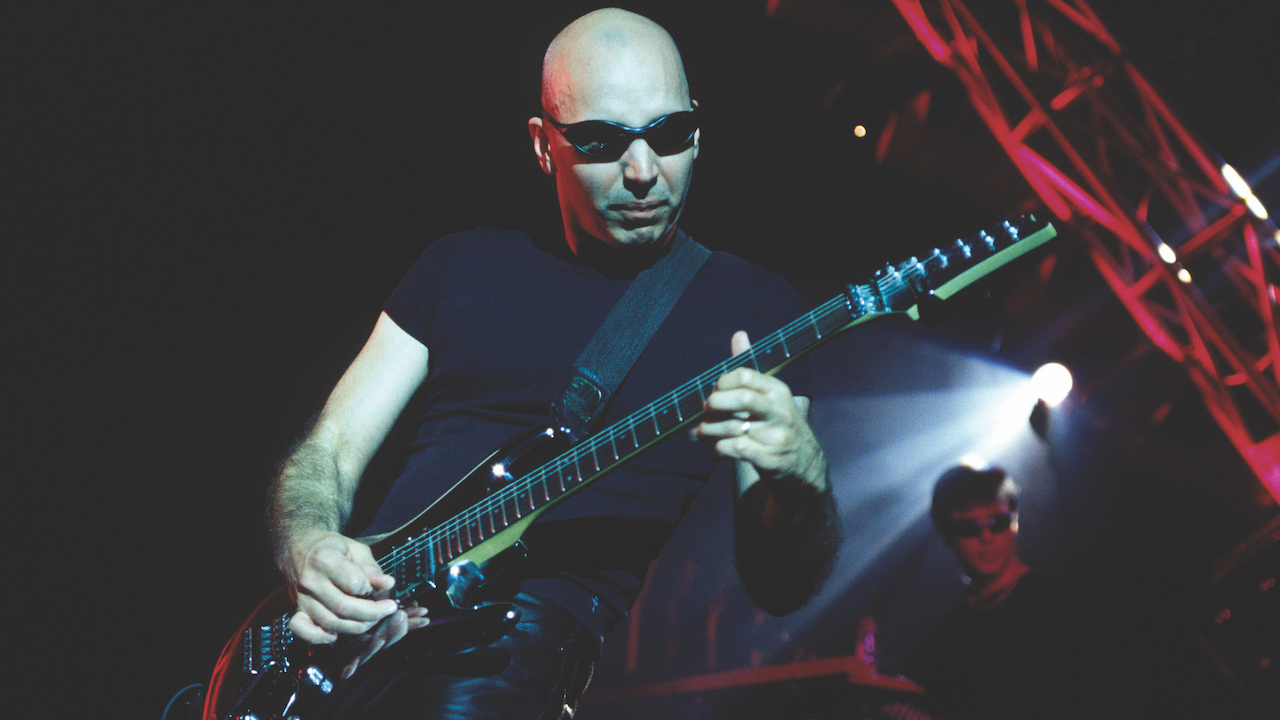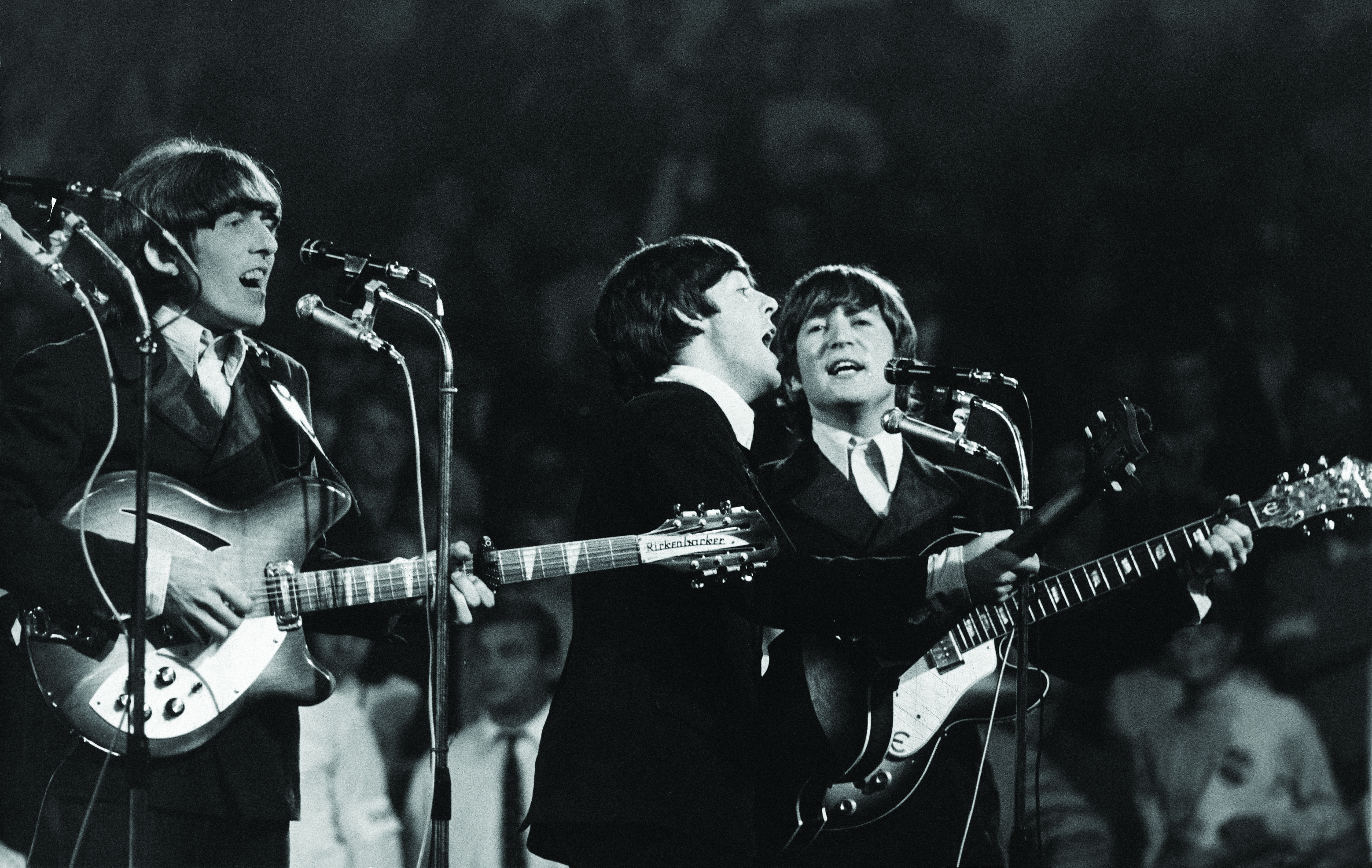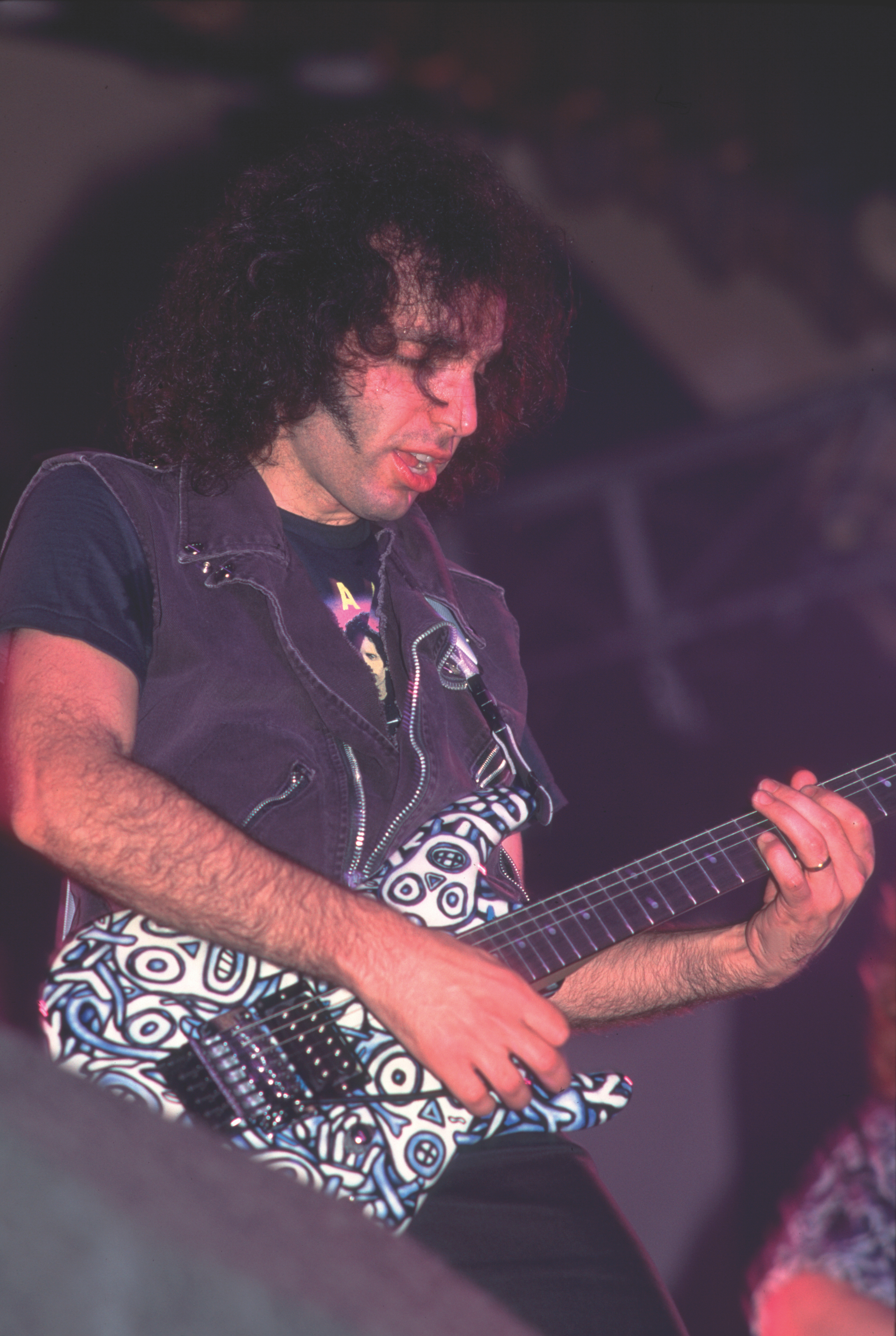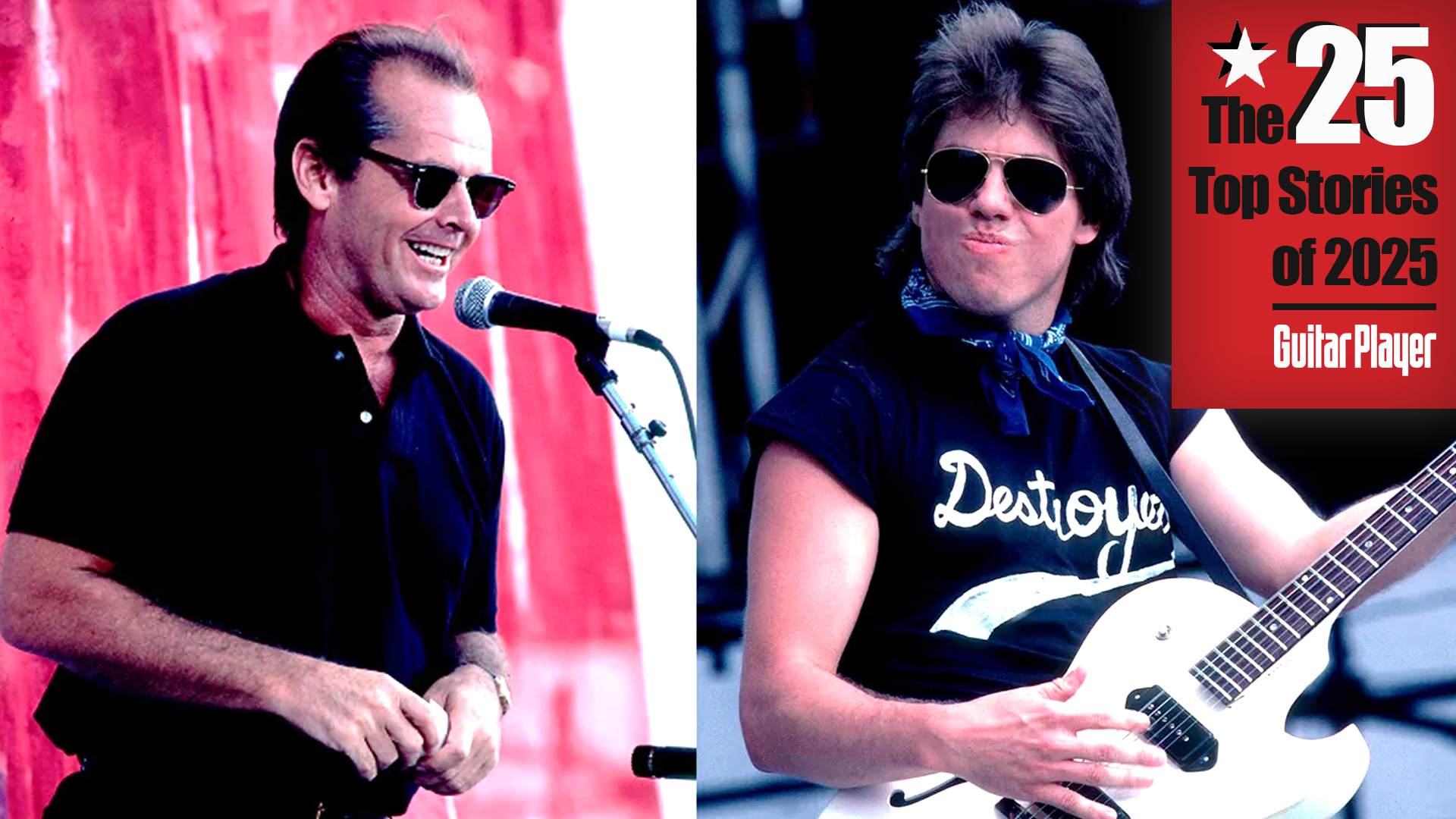Eric Clapton's "Beano" Les Paul, George Harrison's 1965 Rickenbacker, Joe Satriani's "Pearly" prototype: Six stolen guitars that are still missing
The stories behind six famous purloined axes.

Roughly 10 years ago, Guitar Aficionado magazine ran a story about George Harrison’s guitar collection. I was the publication’s managing editor at the time. For the page showing George’s Gibson J-160E — the acoustic-electric he played on many of the group’s early songs — we included a photo of George and John Lennon holding their Gibsons.
As the story goes, Harrison and Lennon bought their matching Jumbos at the same time and eventually, perhaps accidentally, swapped them. Lennon’s was stolen in late 1963 and presumed lost forever by the time our issue came out. That changed after a reader saw our story and thought one of the guitars in that photo of George and John looked a lot like a second-hand early ’60s J-160E owned by his friend. Long story short, the guitars were a match. Lennon’s missing guitar had been found.
Ever since, it hasn’t been lost on me that the media can play a passive, but very important role in helping solve mysteries around historic instruments simply by reporting on them and, where possible, providing photographs and descriptions. Maybe we’ll get closer to bringing them home.
And while we’re on the subject, take time to write down your guitars’ serial numbers and take photos. You’ll be happy you did should your gear have the misfortune to meet up with bad characters, like the lost guitars below…
George Harrison's 1965 Rickenbacker 360/12

STOLEN: Circa September 1966, possibly London
George Harrison was the owner of two Rickenbacker 360/12 12-strings, both gifts to the Beatles guitarist. He received the first — allegedly the second ever made — from Rickenbacker president Francis C. Hall on February 8, 1964, after rehearsals for the group’s Ed Sullivan Show appearance, and went on to make it an integral part of the early Beatles sound on A Hard Day’s Night.
The second was gifted to him by Minneapolis music store B Sharp Music, prior to the Beatles’ August 21, 1965 show at Old Met Stadium. After learning from another visiting Liverpool rock band, the Remo Four, that Harrison might like the guitar, the shop custom ordered it for him. The guitar featured Rickenbacker’s newly introduced style, with rounded edges, rather than the sharp corners seen on the 1964 model, and checkerboard binding on the back, instead of white binding on the front and back.
All the latest guitar news, interviews, lessons, reviews, deals and more, direct to your inbox!
According to Andy Babiuk’s Beatles Gear book, Harrison put the guitar to use in the studio on the Beatles’ next album, Rubber Soul, where it can be heard on the chiming lick to his song “If I Needed Someone.” He played the guitar in concert on many occasions over the next year, the Beatles’ last as a touring act. It’s been suggested over the years that the ’65 Rick was stolen along with his Gretsch Tennessean and Paul McCartney’s ’61 Höfner bass — a theory now debunked — during the January 1969 sessions for Let It Be.
Most likely, the guitar was lifted sometime after the Beatles concluded their 1966 tour on August 29, at San Francisco’s Candlestick Park, and prior to Harrison’s first trip to India to study sitar with Ravi Shankar. Finding the guitar has been difficult in part because B Sharp Music didn’t record the serial number. Rickenbacker CEO John Hall has said five 1965 360/12 guitars could be candidates, based on shipment records. A guitar bearing one of the five serial numbers has surfaced, but whether it’s Harrison’s or not is unknown.
Joe Satriani's 1990 JS2 "Pearly" prototype, Blue Donnie, Rainforest

STOLEN: Pearly, on August 21, 2000, Clearwater, Florida. Blue Donnie and Rainforest, sometime in 2000, San Rafael, California
Joe Satriani's JS2 model was the second signature guitar Ibanez created for the virtuoso. Introduced in 1990, the guitar had a basswood body with a chrome finish, something Ibanez had never attempted before. As it turned out, the finish was prone to cracking, and therefore very few were produced. “Unfortunately, they used real chrome, and any fissures created when the finish lifted the sealant off the body would crack and create a knife edge,” Satch told Vintage Guitar in its January 2012 issue. As a result, the guitar didn’t go into production, and Joe’s three prototypes — dubbed Chrome Boy, Refractor and Pearly (so named for its pair of Seymour Duncan Pearly Gates pickups) — were given a thick plastic coating to protect his hand from getting sliced open by a crack in the finish.
“At first, when the guys delivered the guitars, I remember thinking, Boy, these sound compressed or something,” Satch commented, “and I put them in the rack.” That changed as the guitars aged. “Later, they became my favorites, especially the Chrome Boy.” The guitars were used heavily on record as well as onstage, which is how Pearly came to disappear during load-out following a show at Ruth Eckerd Hall in Clearwater, Florida, on August 21, 2000.
Within days, news of the theft was swirling across the internet, along with the promise of a $500 reward. To date, Pearly hasn’t been found. Sadly, Pearly isn’t the only guitar Satch has lost. Two others include Blue Donnie and Rainforest, both stolen from a rehearsal facility in San Rafael, California. Satch describes Blue Donnie as “my favorite hand-painted Donnie Hunt guitar, used extensively on the Flying in a Blue Dream tour.” The other is “my one and only Rainforest guitar, dedicated to me by my sister Carol.”
Eric Clapton's "Beano" Gibson Les Paul
STOLEN: Summer 1966, in northwest London
When guitarists talk of stolen guitars, the one that most often comes to mind is Eric Clapton’s first Les Paul Standard, the ’Burst he used on the 1966 release Blues Breakers With Eric Clapton. The guitar has the distinction of being the instrument with which Clapton practically defined blues-rock guitar tone and stands as the epitome to which many players strive. The fact that it was stolen and remains lost only furthers its iconic status.
Clapton bought the Burst at the Lew Davis music store at 134 Charing Cross Road, in London, sometime between Sunday, May 30, 1965 — when he was last photographed playing a Fender Telecaster — and Friday, June 4, when a local newspaper photographed him wielding his newly purchased Les Paul at the Ricky Tick club in the Plaza Ballroom in Guildford, Surrey. The guitar was used, but in nice condition. He modified it by replacing the original Kluson tuners with a set of Grovers and, toward the end of 1965, removing the metal pickup covers to reveal the bobbins: double-white at the neck, double-black at the bridge.
This was at the height of Clapton’s prowess with the Blues Breakers, and it’s lucky he was captured for posterity playing the Les Paul at the Blues Breakers sessions between March 27 and 31, 1966, at Decca Records studio in northwest London. But by the time of the album’s release that summer, Clapton was rehearsing with his new blues-rock trio Cream at a church hall in Brondesbury, northwest London. It was from there the Les Paul was stolen before Clapton had played a single lick on it with the new band in public or on record.
The theft got some publicity that August in the Record Mirror, where a downcast Clapton described the guitar as “five or six years old, small and solid. It has one cutaway and is a red-gold color, with Grover machine heads. The back is very scratched and there are several cigarette burns on the front.” He replaced it that month with a ’Burst purchased from future Police guitarist Andy Summers, then bought another that he gave to Free guitarist Paul Kossoff in the summer of 1969 when that group supported Clapton’s new group, Blind Faith.
But finding Clapton’s original ’Burst may prove impossible. Its serial number and year of manufacture are unknown, and only some 20 or so photos of the guitar exist, most of them grainy, making it difficult to match the figuring of the wood and patterns in the fretboard markers, as well as telltale dings and damage. If ever there were an elusive stolen guitar, this one is it.
Jeff Beck's sunburst 1959 Les Paul
STOLEN: July 21, 1969, Tamarack Lounge, Ellenville, New York
Before he was Cheap Trick's guitarist, Rick Nielsen was a vintage guitar dealer at a time when his wares were more commonly known as “used” guitars. Among his star customers was Jeff Beck, who purchased from Nielsen a 1959 ’Burst that he went on to use with the Jeff Beck Group. On July 21, 1969, the band — consisting then of Beck, singer Rod Stewart, bassist Ronnie Wood and drummer Tony Newman — was performing at the Tamarack Lounge in Ellenville, New York, in support of Beck’s album Beck-Ola, released that June, with the ’Burst among the guitars onstage.
According to Newman, Beck riled up the audience by spraying them with a fire extinguisher, after which security quickly rushed the band offstage. While the gear was unattended, someone made off with Beck’s ’Burst. In 2000, the guitar was finally located by Perry Margouleff, a Long Island musician and vintage guitar dealer to the stars. Margouleff was eager to purchase the ’Burst but wanted Beck’s blessing, which he says was received via a phone call. Margouleff subsequently paid $75,000 to an undisclosed dealer for the guitar.
In January 2018, Beck’s manager notified Margouleff that his client wanted the Les Paul back. When the parties failed to reach a resolution, Margouleff filed suit, seeking a declaratory judgment that Beck had abandoned and waived any claim to the instrument. David Baum, Beck’s lawyer, has denied the 2000 phone conversation with his client ever took place. Thus began a “he said–he said” over who is the ’Burst’s rightful owner, a question that, to date, has not been settled. Beck died in January 2023, adding a new wrinkle to the matter. The guitar remains in Margouleff’s possession.
Guitar Player is the world’s most comprehensive, trusted and insightful guitar publication for passionate guitarists and active musicians of all ages. Guitar Player magazine is published 13 times a year in print and digital formats. The magazine was established in 1967 and is the world's oldest guitar magazine. When "Guitar Player Staff" is credited as the author, it's usually because more than one author on the team has created the story.
- Christopher ScapellitiGuitarPlayer.com editor-in-chief



